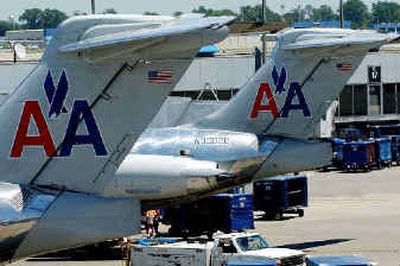Major airlines see more financial turbulence

DALLAS — The divide between the airline industry’s winners and losers was on stark display Wednesday as Southwest Airlines reported a fourth-quarter profit despite high fuel prices and low fares, while American Airlines and Northwest Airlines lost more than $800 million.
Still, there is evidence that the chasm separating the haves and some of the have-nots narrowed in 2004 and that business will again be tough for all carriers in 2005. Investors sent shares of all airline stocks lower in a sign that they don’t see a quick end to the industry’s turbulence.
Airline executives were cautious to grim in describing their outlook. Gerard Arpey, chairman and chief executive of American’s parent company, AMR Corp., called the fourth quarter “a disappointing end to a very difficult year,” even though 2004 was American’s best performance in four years, thanks in part to significant cost cutting over that period.
For Southwest Airlines Co., 2004 was its second smallest profit in eight years, a sign of just how difficult business conditions were for the fuel-intensive industry.
There was no brave talk of an imminent turnaround in the industry’s fortunes. “Our outlook for 2005 doesn’t look a whole lot brighter,” Arpey said.
Analysts expect more heavy losses this year. Ray Neidl, an analyst with Calyon Securities, predicted U.S. carriers will lose $1.9 billion in 2005, a big improvement from 2004, though his estimate assumes oil prices drop significantly from current levels.
The only bright spot, Neidl said, is that some big carriers are cutting back U.S. capacity, “but it’s not going to be enough to lift (ticket) prices.”
With little hope of raising fares significantly — Delta Air Lines Inc. touched off a new round of fare cuts this month — and no control over fuel prices, carriers say they are left with one option: cutting costs.
Northwest Airlines Corp., which had its worst performance ever in 2004, may have to seek more than the $950 million in annual labor cuts that it is already demanding from workers, said chief executive Doug Steenland.
American has already announced it would defer delivery of 54 of 56 jets from Boeing Co, postponing $1.4 billion in spending through 2007.
AMR said it spent $477 million more on fuel in the fourth quarter than it would have if fuel had remained at 2003 prices. Overall, AMR’s fourth-quarter costs jumped 6 percent — wiping out a 3.4 percent increase in revenue.
Dallas-based Southwest insulated itself from high fuel prices by locking in lower prices years ago — a gamble that could have backfired if prices fell. Southwest estimated that it saved $174 million with this maneuver but still saw fuel costs rise 20 percent per gallon.
Jamie Baker, an analyst at J.P. Morgan, said he expects fourth quarter losses from JetBlue Airways Corp. and AirTran Holding Inc.’s AirTran Airways, low-cost carriers that aren’t as well-insulated as Southwest from costly fuel.
Southwest earned $56 million, or 7 cents per share, in the fourth quarter, down from $66 million a year earlier and less than the 8 cents per share predicted by analysts surveyed by Thomson First Call. Revenue rose 9 percent, to $1.66 billion, still slightly below analysts’ estimate of $1.68 billion.
For all of 2004, Southwest earned $313 million on revenue of $6.53 billion.
Fort Worth-based AMR lost $387 million or $2.40 per share on revenue of $4.54 billion in the fourth quarter, compared to a loss of $111 million or 70 cents per share a year earlier.